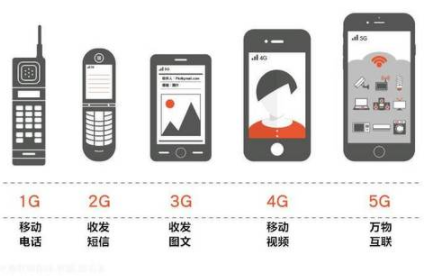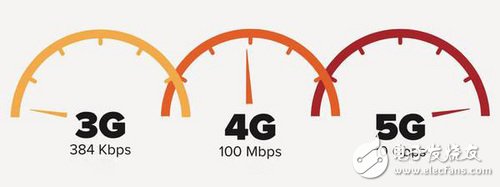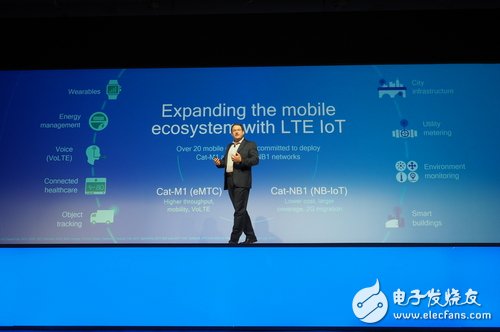The 5G network upgrade phase will bring great changes to our lives. What do we expect when talking about 5G? Cloud intelligence and end intelligence can be combined to solve the high requirements of automatic driving for high reliability and low latency of network connection.
Different from previous 2G, 3G, 4G mobile network upgrades is more like a one-way iteration of the network itself. From voice to image to video, the essence is the growth of network connection speed, because at that time, this is the development of the network. As a matter of urgency, both the commercial end and the client side need faster network speeds to bring more content.
When the network speed has reached a certain level, to the 5G network upgrade stage, although it can not be said that there are changes in the change of the land, but its coverage can be much richer. When Cangjie knows the etiquette, when the problem of food and clothing is solved, let us consider various individual needs.

3GPP defines three major scenarios for 5G applications, mainly:
eMBB (enhanced Mobile BroadBand)
mMTC (massive Machine Type of CommunicaTIon);
URLLC (Ultra-Reliable Low Latency ConnecTIon), which is a highly reliable low latency connection.
After the above scenes are separately extracted and refined into concepts, there is a hint of abstraction in the concise, then we will open them up and see what we are expecting for 5G.
Let me talk about eMBB - enhanced mobile broadband. Let's first say that it is because the development of the eMBB scenario has been on the right track after the 3GPP 5G NR first version specification is frozen. It is the main scenario discussed by R15. As for the mMTC and URLLC scenarios, it will be introduced in the second version R16. eMBB is like a continuation and enhancement of the previous network upgrade main line, in order to bring more and stronger bandwidth, and also need to consider how to use it more efficiently when bandwidth is limited.
Having said that, you need to briefly explain the problem of the coding scheme. Although some of the coding methods discussed earlier have some well-known enterprises in the industry as their platforms, it is not that these coding methods are invented by them, but these The research and patents of the manufacturers under the corresponding coding scheme will be deeper and more, and those coding schemes are adopted, which is naturally more beneficial to them. Having more patents on the bottom layer means that you have a stronger voice in the development of technology. When the same kind of enterprises face them, cooperation becomes a more sensible choice than hard.
Among them, after the repeated battles in October and November of 2016, the LDPC code dominated by Qualcomm and the Ploar code in the eMBB scene are divided into two parts. The final LDPC code becomes the data channel coding scheme, and the Polar code becomes the signaling channel coding scheme. The LDPC code stands out in addition to the technological advancement at the coding level. Qualcomm's own industry leadership position also has certain advantages, and the technical level is quite the same. That foundation and development are factors that have to be considered.
According to the standards promulgated by the ITU (International Telecommunication Union), the downlink peak data rate of the 5G system should be at least 20 Gbps, and the uplink peak data rate should be at least 10 Gbps. At the same time, for the “5% of the cumulative distribution function of user throughputâ€, the lowest rate available to the user in the real environment, the minimum requirements of the ITU standard “5G air interface technical performanceâ€, for the eMBB scenario, in the downstream direction of the 5G system, the user actually The data rate experienced should be no less than 100 Mbps. In the uplink direction, the data rate actually experienced by the user should be no less than 50 Mbps. This kind of data is 100 Mbps in the 4G era, and the growth leap is imaginable.

It is precisely because of such tremendous growth that content forms such as 3D, Ultra HD, AR, VR and so on have the potential to be transformed into online. Considering the more advanced baseband and equipment for new content that 5G networks require, it has to be said that Qualcomm is quite advantageous. Baseband, the Snapdragon X16 and Snapdragon X20 for Gigabit LTE are not to mention, the Snapdragon X50 supporting the 5G standard as the solution release and the successful implementation of the data connection double first, in a year, realized From the solution to the actual landing, the starting point is the transmission speed of 1.25Gbps in the 28GHz millimeter band. With the technical advantages of Qualcomm, it is not far from reaching the peak design standard of 5Gbps.
In terms of AR and VR, which are more novel in form, Qualcomm's advantage is even greater. Speaking of the two companies that VR first came to mind, Oculus and HTC, because only they can achieve mass production in the relatively complete technology, and the two latest Oculus Go and HTC Vive Focus It is Qualcomm's chip.
As for the next generation of VR/AR products, with the strongest GPU Adreno 60+ indoor space positioning (room-scale) + six degrees of freedom (6DoF) + instant positioning and map construction (SLAM) Down, unless they don't want to give users a better experience, Qualcomm will still be their first choice. Technology is strong, and Qualcomm is talking about the topic of 5G device-side chips.
After the eMBB scenario is basically clear, let's move on and talk about mMTC, massive machine-like communication. According to the ITU standard, for mMTC scenarios, the device connection density must be at least 1 million devices per square kilometer. Its main goal is to reduce the power consumption while increasing coverage and increasing the number of connections. Because the standards have not yet been fully delineated, we are more of an analysis of the existing phases. From the perspective of communication technology, the difficulty of mMTC is actually lower than that of eMBB. The relative technical utilization and protocol will be simplified, because 4G and pre 5G have sufficient transition and preparation, about mMTC and NB-IoT, eMTC, there is no essential difference, can be understood as a technology extension and breakthrough, after all, we need to achieve the Internet of Things Internet, more for the flow of data, to ensure that all devices are online at the same time And can clearly convey the data they provide and demand, the data itself is not complicated, but the scale and magnitude will be larger.

ZTTEK Batteries, For 5G backup base station .Customize the lithium ion battery packs according to the application and product requirements of the customers.
Lithium ion battery integration requires a special set of skill and expertise to optimize the performance and battery life.ZTTEK Batteries , using the most advanced technology delivers the best quality battery packs.
Our batteries are safe to use, better performance, higher shelf life and a very low maintenance cost.
48V100Ah Lithium Ion Battery,Lithium-Ion Battery For Home Backup Electricity,Lithium Ion Battery 48V 100Ah,48V Lithium Iron Phosphate Battery
Jiangsu Zhitai New Energy Technology Co.,Ltd , https://www.jszhitaienergy.com
